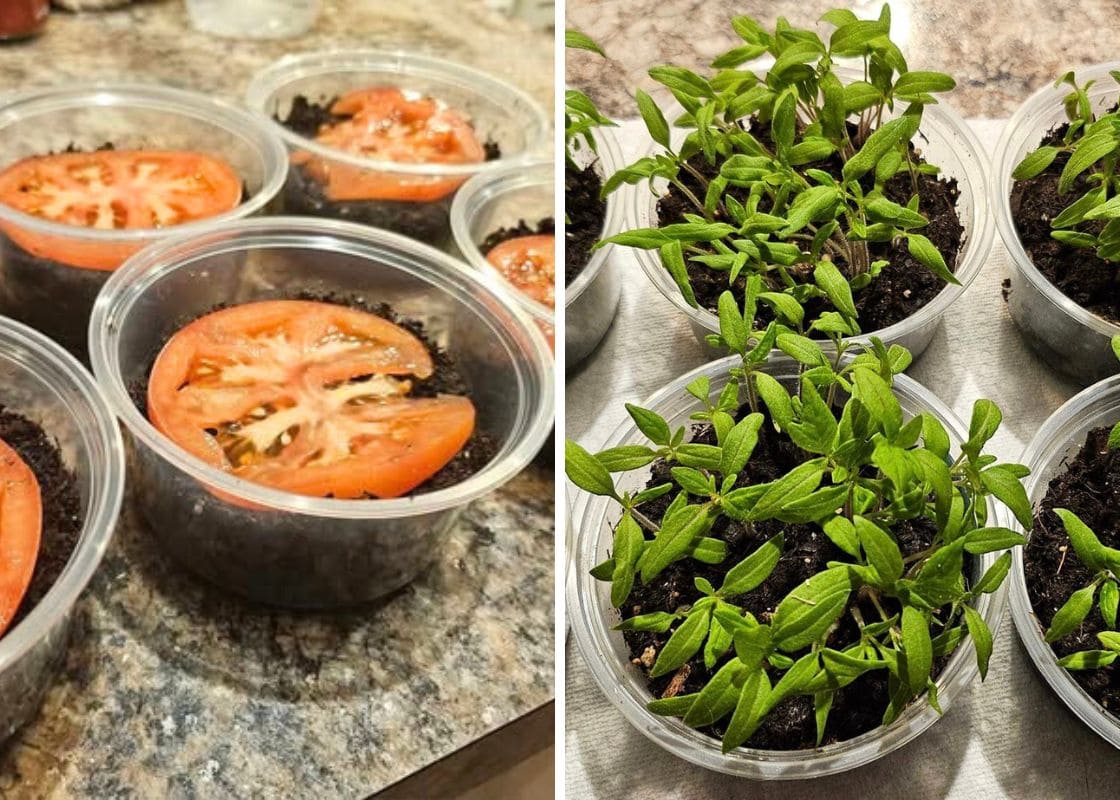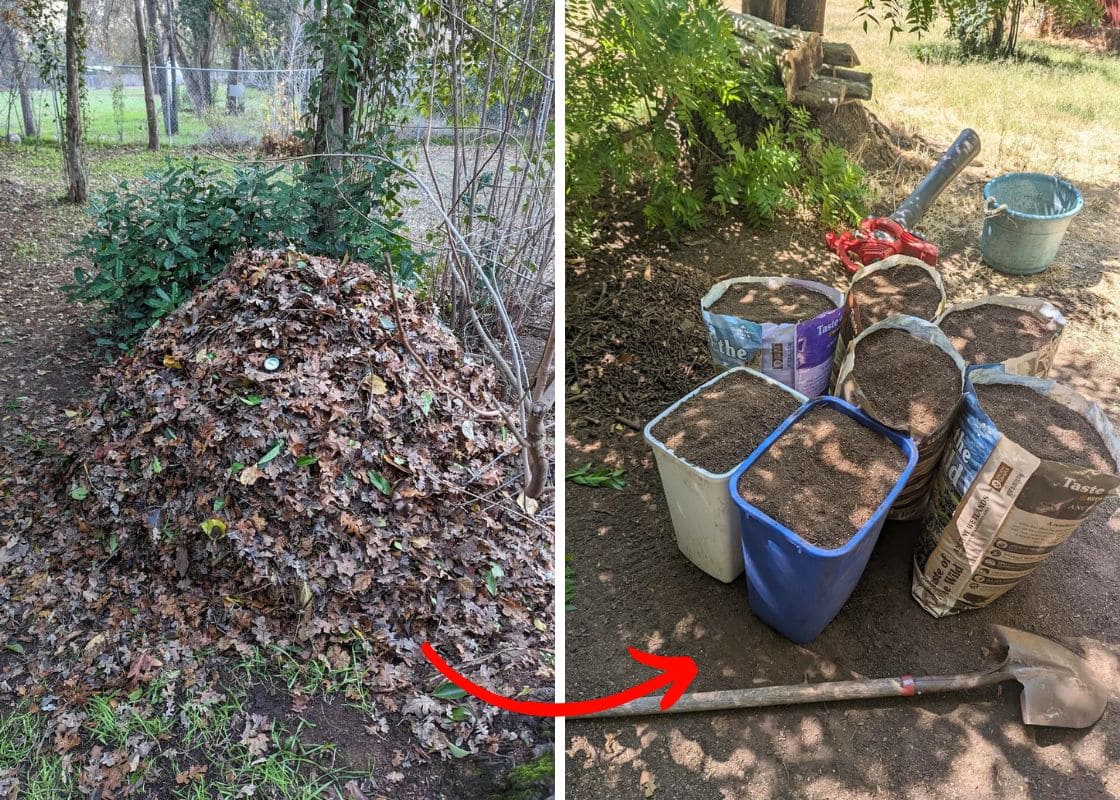Imagine the joy on your children’s faces as they watch mammoth sunflowers grow in your garden.
These impressive giants can reach up to 12 feet, turning your backyard into a vibrant display of yellow blooms.
In addition, growing these sunflowers is a fun family adventure, teaching kids about nature and patience.
They attract bees and butterflies, enriching your garden, and their seeds are a tasty snack for both humans and wildlife.
Summary:
- Growing mammoth sunflowers is a joyful family activity and providing stunning 12-foot-tall blooms that attract pollinators.
- You can sowing seeds indoors or use cuttings and provide full sun, well-drained soil, and support for tall stalks.
- You can harvest when blooms are fully open and dry flower heads to preserve seeds.
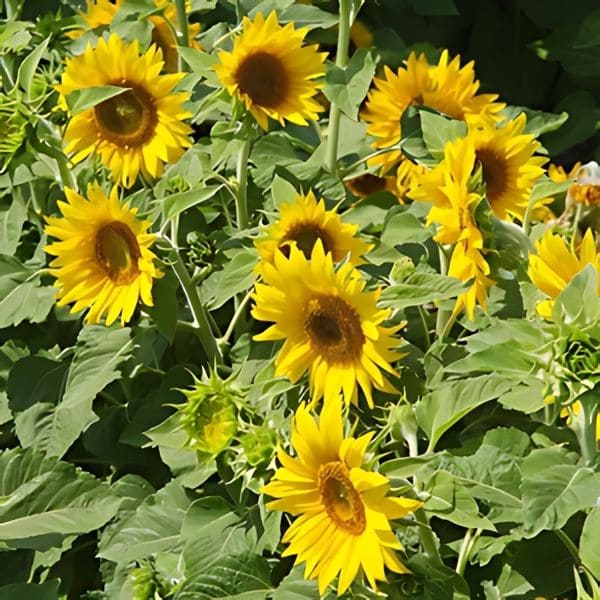
| Scientific Name | Helianthus annuus ‘Mammoth’ |
| Common name | Mammoth Sunflower |
| Family | Asteraceae |
| Plant Type | Annual |
| Height | Up to 12 feet |
| Flower Diameter | 12-14 inches |
| Flower Color | Yellow |
| Flowering Season | Summer to early fall |
| Sunlight | Full sun |
| Soil | Well-drained, fertile soil |
Propagation
From Seeds
When starting seeds, I recommend using a divided seed tray filled with multi-purpose compost.
You should transfer seedlings to 9cm pots once they reach two inches in height and grow them indoors initially before moving them outdoors.
For container planting, you need to use large pots filled with well-rotted manure and good-quality compost.
If planting in the ground, enrich the soil with manure or compost and a general-purpose fertilizer.
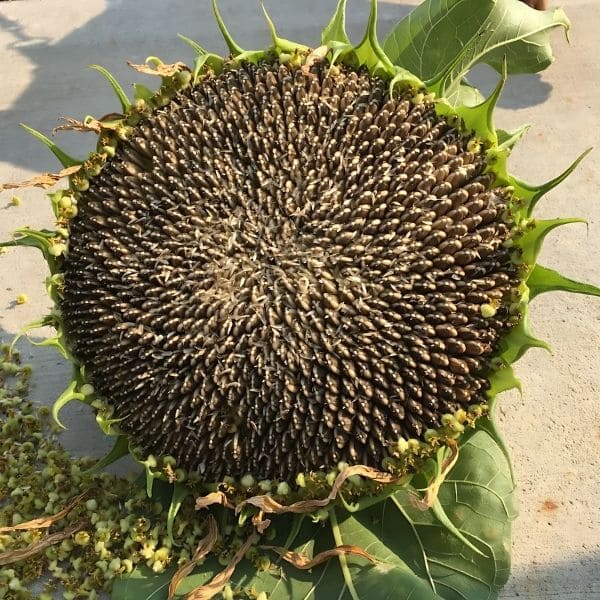
From Cuttings
When propagating from cuttings, I recommend selecting a healthy sunflower with multiple stems.
You should separate it into smaller sections, ensuring each has roots and stems. Take a 4-6 inch cutting with mature leaves, cut it at a 45-degree angle, and plant it in compost and soil.
Water the cutting well and keep it in a shaded spot initially, then gradually expose it to sunlight. Using rooting powder can help the process.
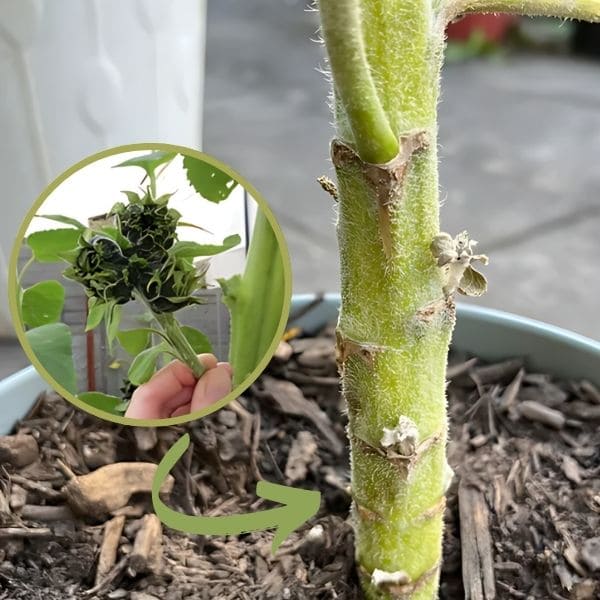
For support, I suggest utilizing canes, string, or metal supports for herbaceous sunflowers, and individual canes for giants.
If you have extra tall sunflowers, you should allow them to grow against a wall for additional support.
Growing Mammoth Sunflowers
Preparation
When preparing to plant mammoth sunflowers, you should choose a sunny garden spot with at least 6-8 hours of direct sunlight daily.
You also dig an area 2-3 feet wide and 2 feet deep and enhance soil with compost, manure, or a balanced slow-release fertilizer.
Next, choose high-quality seeds from reputable stores and select a variety you love.
Mammoth Grey Stripe
These flowers are known for their impressive height, reaching up to 12 feet, with large flower heads up to 12 inches in diameter. Their large, striped seeds are popular for snacks and bird feed.

Russian Mammoth
This variety is noted for slightly larger flowers and seeds with heights of up to 12 feet. They are ideal for garden giants and produce seeds perfect for snacks and bird feed.

Mammoth Sungold
These flowers grow to 10-12 feet tall and reach up to 12 inches in diameter, bring vibrant color to gardens. They are perfect for cut flowers and attract many pollinators.

Mammoth Lemon Queen
This variety reach heights of up to 8-10 feet and feature large flower heads up to 10 inches in diameter. They are excellent for brightening gardens and attracting pollinators.
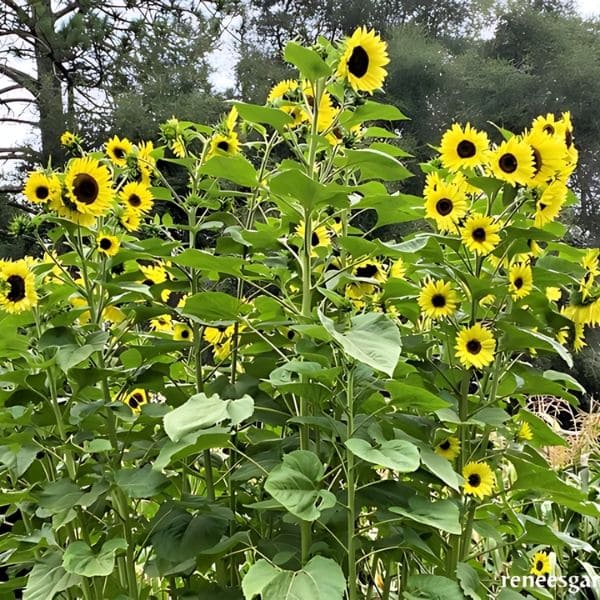
Growing Mammoth Sunflowers Outdoor
I recommend planting mammoth sunflowers outdoors in late May to early June for taller stalks.
You should sow the seeds directly into the ground after the last frost, once night temperatures stay above 50°F.
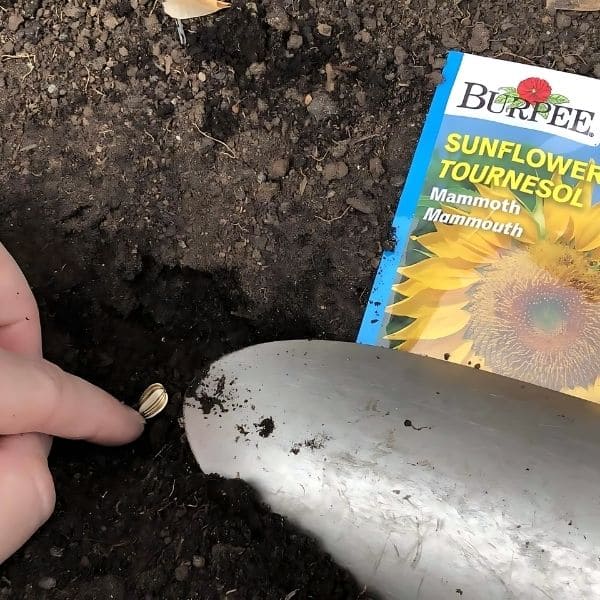
You need to plant the seeds 1 inch deep to protect them from birds. I suggest planting 2 to 3 seeds per spot to ensure at least one plant emerges and keep the soil moist but not soggy.
The seeds usually germinate in 7-14 days. Then, you need to thin the plants to 3-4 seedlings when they reach 3 inches, and select the best one when they are 2 feet tall.
Care for Mammoth Sunflowers
Here are the most important things when caring for mammoth sunflowers:
- Ensure 6-8 hours of direct sunlight daily.
- Keep soil consistently moist but not waterlogged.
- Use well-drained, fertile soil enriched with compost.
- Provide stakes, canes, or trellises for tall stalks.
- Plant 20 inches apart for ample growth space.
- Thin seedlings to the strongest plant at 3 inches tall.
Light
I recommend ensuring mammoth sunflowers get 6-8 hours of direct sunlight daily to thrive, reach their full height, and produce large blooms.
You should choose a sunny spot, as growing them in shade or partial shade results in stunted growth and smaller flowers.
Keep in mind, they can easily shade out other plants, so you need to plan their location accordingly.
Soil
You plant mammoth sunflowers in well-drained, fertile soil enriched with organic matter like compost.
You need to ensure the soil is loose and deep to accommodate their extensive root systems. Maintaining a soil pH between 6.0 and 7.5 will help achieve optimal growth and vibrant blooms.
Water
You should give mammoth sunflowers about 1 inch of water per week, especially during dry periods. Especially, water deeply once or twice a week to keep the soil consistently moist but not waterlogged.
Let the soil dry out between waterings to encourage the taproot’s deep growth. You need to reduce watering as the plants mature.
Temperature and Humidity
The ideal temperatures to grow mammoth sunflowers are between 70-78°F, as they are best suited for USDA hardiness zones 3-9. They prefer warm conditions and can tolerate moderate humidity.
You need to protect young plants from late frosts and avoid extreme temperature fluctuations. Consistent warmth and proper air circulation will help them grow strong and tall.
Pruning
You should remove any damaged or diseased leaves to promote healthy growth.
If you are growing multiple heads, pinch off side shoots early to direct energy to the main flower for larger blooms.
Fertilizer
You should use a balanced, slow-release fertilizer for mammoth sunflowers.
Early in the season, apply a high-nitrogen fertilizer to encourage strong growth, then switch to a phosphorus-rich one for large blooms.

For small plants, water around the root zone, about 3-4 inches from the plant, with 2 gallons of diluted liquid fertilizer weekly.
For larger plants, you create an 18-inch-wide, 4-inch-deep moat around the plant and pour several gallons of diluted fertilizer into it weekly.
Alternatively, make several 3-4 feet deep holes about 1½ feet from the plant and fill them with diluted fertilizer. You also need to avoid pouring fertilizer directly on the stems to prevent rot.
Staking
Due to their height and heavy flower heads, you should use sturdy stakes or canes that are at least 6-8 feet tall, tying the stems loosely with garden twine.
Install the stakes at planting time to avoid disturbing the roots later. In windy conditions, additional supports like row strings and fencing can help prevent the plants from toppling.
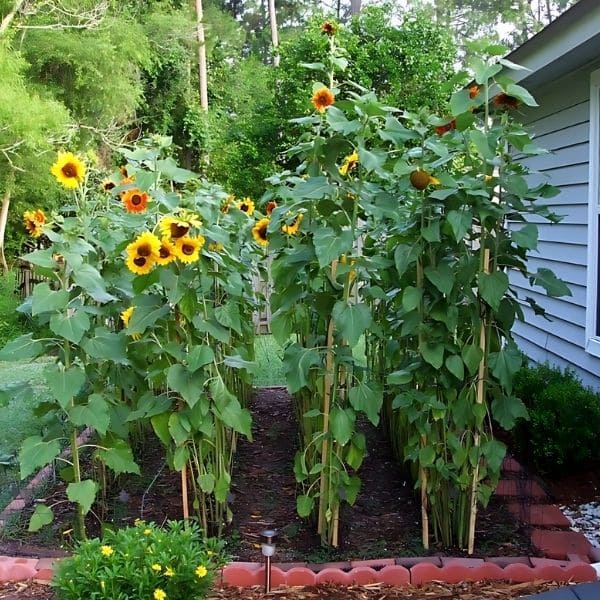
Pests and Diseases
I’ve found that mammoth sunflowers can be affected by pests like aphids, caterpillars, and sunflower moths.
Aphids weaken plants by sucking sap, causing yellowing and stunted growth. You can control them with insecticidal soap or natural predators like ladybugs.

Besides, caterpillars, including sunflower moth larvae, damage leaves and flower heads. You should handpick them or use organic insecticides.
In addition, sunflower moths lay eggs on flower heads, with larvae burrowing into seeds. To protect your sunflowers, use row covers or insecticides during early flowering.
Common Problems
Wind Damage
Mammoth sunflowers are tall and can be easily knocked over by strong winds. You can support them with sturdy stakes or plant them near a windbreak to prevent toppling.
Space Competition
You plant mammoth sunflowers in a location where they won’t compete with smaller plants for sunlight and space as their size can easily shade out other plants.
Instead, you should consider planting companion crops like corn, squash, and beans alongside your sunflowers.
Corn can provide support for the sunflowers, while squash and beans help suppress weeds and improve soil fertility through nitrogen fixation.
Small Blooms
Mammoth sunflowers need full sun for at least 6-8 hours daily. Insufficient sunlight can lead to stunted growth and smaller blooms.
Harvest and Preservation
Fresh Mammoth Sunflowers
You harvest fresh mammoth sunflowers when the flower head is fully open and the petals are vibrant.
Next, use a sharp knife to cut the stem about 12-18 inches below the flower head. You also should strip off any excess leaves from the stem to prevent moisture loss and rotting.
Then, place the sunflowers in a vase filled with lukewarm water. With proper care, fresh sunflowers can last 5-7 days in a vase.

Mammoth Sunflowers Seeds
Wait until the flower heads droop and the back turns brown to harvest the seeds, you cut the flower heads from the stem leaving a few inches of stem attached.
Next, you hang the flower heads upside down in a dry, well-ventilated area for 2 to 3 weeks to dry thoroughly.
Once dry, you rub the flower heads between your hands or use a fork to release the seeds. Then can you store the seeds in containers and label them with the variety and harvest date.
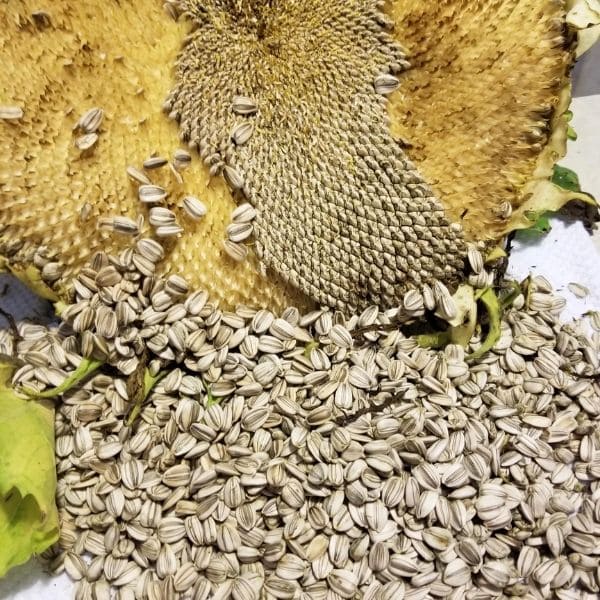
FAQs
What should you not plant next to sunflowers?
Sunflowers can release allelopathic chemicals that inhibit the growth of nearby plants.
I recommend avoiding planting crops like potatoes, pole beans, and other sun-sensitive plants next to sunflowers.
Are mammoth sunflower seeds heirloom?
Yes. They have been passed down through generations and are known for their large size, impressive height, and reliable growth.


